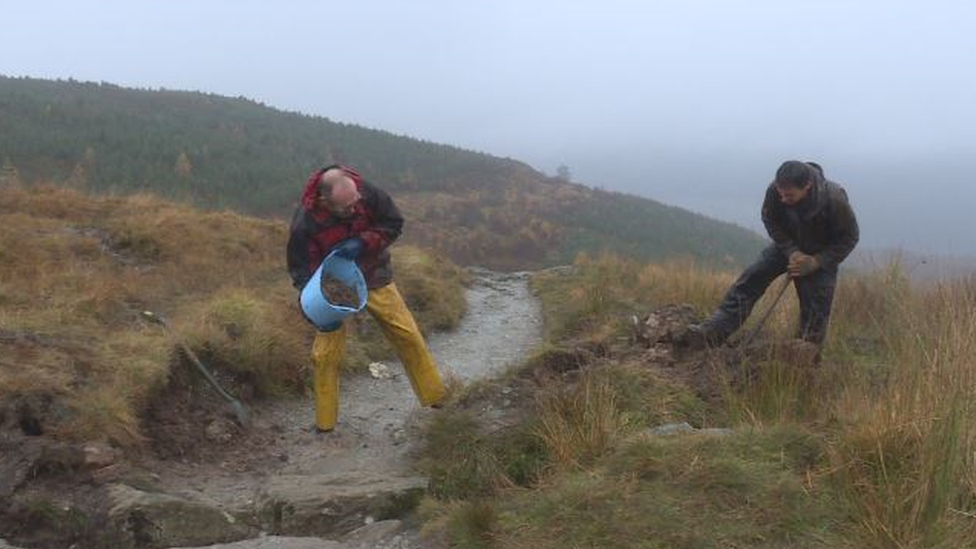Covid in Scotland: Social distancing 'could wreck mountain footpaths'
- Published
- comments

Scotland's hills have been particularly busy with walkers this year
Footpaths on some of Scotland's mountains are at risk of irreparable damage because of social distancing, it has been claimed.
The National Trust for Scotland (NTS) says people are leaving the paths on Ben Lomond and Ben Lawers to avoid other walkers.
But it warned that is damaging vegetation and widening paths.
The NTS is urging people to walk in single file and return to the paths as soon as other walkers have been passed.
A surge in the popularity of hillwalking during this year's coronavirus pandemic has seen daily visitor numbers at Ben Lomond grow from 1,000 on a normal sunny weekend to around 2,000.
While the NTS welcomes visitors to the hills, it says it is important people understand the damage that can be caused.
Teams are carrying out repairs but admit they are struggling to keep up.

Walkers are being urged to return to paths as soon as other people have passed
Ben Lomond property manager Alasdair Eckersall told BBC Scotland: "People have, quite rightly, been stepping off the path to allow others to pass but then staying off the path and keeping walking down the softer verges.
"The result of this is that the vegetation is getting very heavily trampled all of a sudden."
Helen Cole, property manager at Ben Lawers, fears decades of conservation work is being put at risk.
She said: "I've been working on footpaths at Ben Lawers for 30 years and I've never seen the damage quite as rapid as this.
"We've got some of the rarest mountain plants in Britain here and we've spent decades and hundreds of thousands of pounds balancing our conservation work with public access.
"But what's happened in the last few months has put our work back by years."

NTS workers have been trying to repair damage to the paths
Huge efforts have been under way over the last 30 years to improve scarring on Ben Lomond.
In the 1980s and 90s, the path to the summit was up to 25 metres (27.3 yards) wide in places.
Since then, the maintenance programme had kept on top of the erosion pressures caused by walking boots and weather.
The concern now is that, if the erosion continues, the visible scar could quickly return.
The NTS is also asking people to avoid using metal-tipped walking poles and to take home any litter, including orange peel and banana skins.